Common Names: Emerald Ripple Peperomia, Emerald Ripple Pepper, Green ripple peperomia, Ivy-leaf Peperomia, Little fantasy Peperpmia, Metallic Peperomia, Ripple Peperomia, Silver Heart
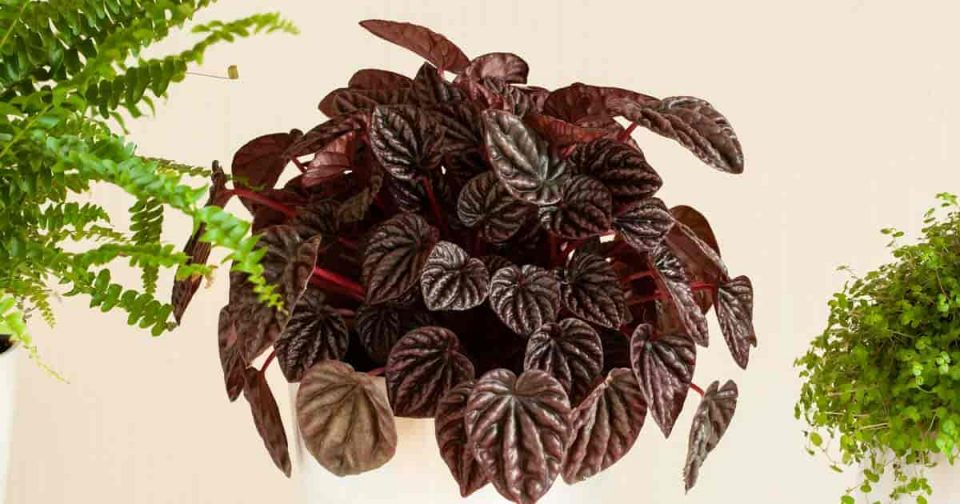
Ripple Peperomia is a Piperaceae family evergreen perennial. Peperomia Emerald Ripple, also known as Peperomia Caperata (Scientific Name), has heart-shaped, puckered, richly veined leaves. The leaves come in various green, dark red and grey colours. All peperomia plants have tiny, small flowers that grow in groups on erect, conical, crimson spikes.
Its succulent heart-shaped, crinkled, highly veined leaves make it a popular houseplant. It’s also known as Emerald Ripple Peperomia. It’s a slow-growing plant with fleshy leaves and thin spikes of little greenish-white blooms. Peperomia Emerald Ripple is a little plant that looks nice on a table or desk. It also grows well outside as long as the temperature is above 50°-55°F (10°-12.8°C).
Varieties of Ripple Peperomia
Ripple peperomia is only one of the thousands of peperomia plant species. However, there are many lovely cultivars of the species Peperomia caperata. Here are a few different varieties of ripple peperomia to consider.
1. Emerald Ripple Peperomia
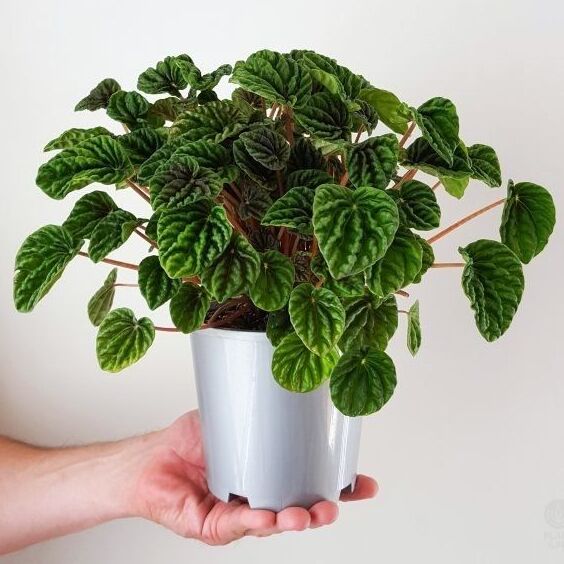
The emerald ripple peperomia grows bushy and compact. Its heart-shaped, dark-green rippling leaves feature deeply puckered veins. Emerald ripple peperomias feature white blooming spikes on the tips of red stems.
2. Red Ripple Peperomia
The ripple red peperomia features heart-shaped crinkled leaves that are iridescent burgundy red. The shiny corrugated peperomia leaves give this epiphytic houseplant an unusual appearance. This mound-forming peperomia may reach a height of 8″ (20 cm) and a width of the same.
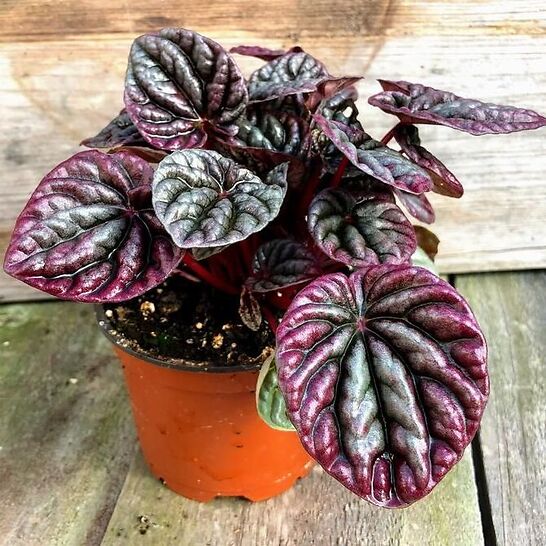
3. Silver Ripple Peperomia
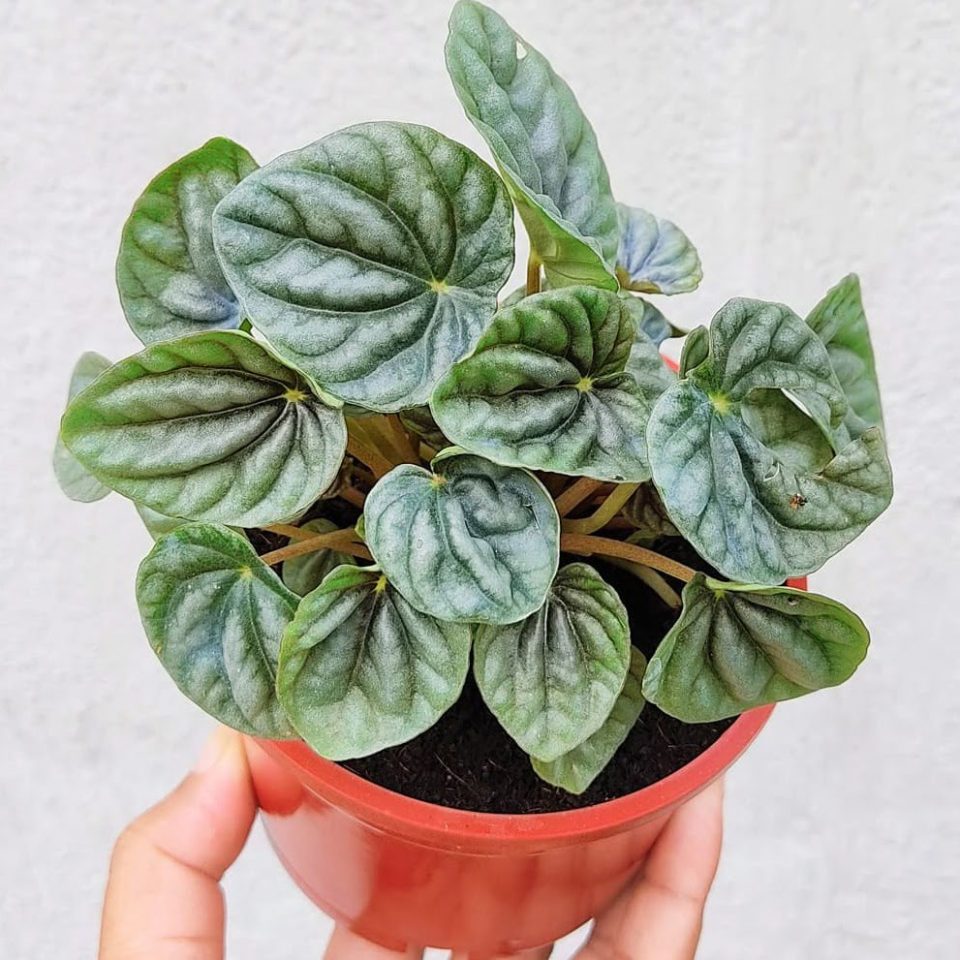
Silver ripple peperomia leaves are silvery corrugated cordate (heart-shaped). Its wrinkled leaves contain green and silver tinges, with some types exhibiting a silver sparkle.
Read this complete article on Peperomia Frost Care
Also read: Peperomia Ruby Cascade Plant: Learn Best Care Tips to Ensure Healthy Growth
4. Ripple Peperomia ‘Rosso:
Peperomia Rosso is a flowering epiphytic indoor plant with yellowish-green inflorescences on short red stalks. This cultivar’s lanceolate pointed leaves feature deep green upper surfaces, maroon undersides, and scarlet stems. Pink and green Peperomia caperata ‘Pink Lady’ and dark green and scarlet Peperomial ‘Teresa’ are two other lovely variegated ripple peperomia varieties.
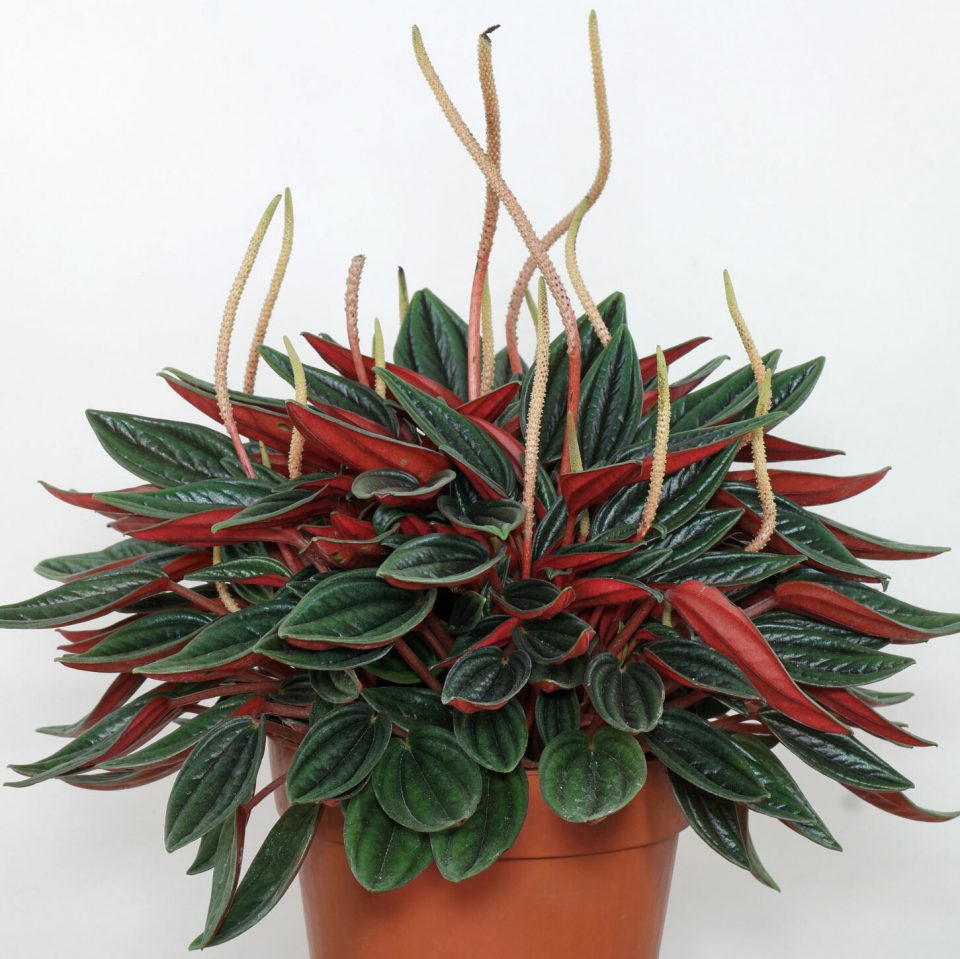
How to Care for Ripple Peperomia (Peperomia caperata):
Let’s look more at the best way to care for Peperomia caperata at home to ensure the beautiful waxy leaves keep their shiny, rippled appearance.
- Water and soil: Allow the top half of the soil of a peperomia plant to dry up before watering. The primary cause of significant peperomia issues is overwatering, which results in yellow leaves and damp stems. Overwatering is the direct cause of root rot, which kills the plant. When irrigated from the bottom, peperomia plants thrive. This approach keeps water off the leaves and aids in the prevention of plant diseases. Peperomia’s thick leaves store water, enabling it to survive lengthy periods without moisture.
- Light: Peperomia plants thrive in strong indirect light from the west or east-facing window. They also perform well in fluorescent lighting. Insufficient light leads this slow-growing plant to cease developing entirely. The leaves are burned by direct sunlight.
- Fertilize: The ripple peperomia is not a heavy feeder. During the growth season, you must use a diluted houseplant fertilizer once a month. This extra feeding in the spring and summer can help maintain the corrugated, ridged leaves looking their best. Varieties of ripple peperomia may grow successfully without supplemental feeding. Sometimes, the best approach to care for ripple peperomia is to keep it in bright, filtered light and only water it when the soil is dry.
- Humidity: The ripple peperomia grows at medium to low humidity. Humidity levels are unimportant in ordinary residential situations. Although this tropical rainforest plant thrives in humid environments, it adapts well to household humidity levels. To keep Peperomia caperata leaves wet, spray them. You may also wet them with a damp towel to remove dust from the leaves once a week. If the air in your home is very dry, set the ripple peperomia on a pebble tray filled with water.
Ripple Peperomia Flower:
Ripple peperomia flowers are white flower spikes known as inflorescences that develop at the tips of red stalks. The blooms are often creamy-white tint. Ripple peperomia plants bloom throughout the summer or fall, depending on the growth circumstances. Ripple peperomia flowers resemble arum lily stamens but lack the modified coloured leaves.
FAQs
Q1: How to propagate Ripple peperomia?
The first simple method for propagating peperomia is in water. The technique is quite similar to rooting pothos cuttings in water. Simply cut a stalk (not a leaf) and place it in a cup of water. After roughly 6 weeks, my roots began to grow little white, almost transparent roots.
Q2: What is the characteristic feature of Ripple Peperomia Leaves?
Peperomia caperata is characterized by its heart-shaped, wrinkled leaves. The puckered black veins contrast with the leaves’ elevated ridges and metallic shine, giving it a space-age,’ an alien appearance. Because of its dense, compact evergreen leaf growth, the ripple peperomia is an excellent interior plant for homes or workplaces. The leaves of ripple peperomia are cordate, with a corrugated surface and imprinted veins. The leaves range in size from 1″ to 3″ (2.5-7.5 cm) and grow on the ends of red 3-inch (7.5-cm) petioles (stems).
Q3: Which pests and diseases are there in Ripple peperomia, and how to get rid of Pest or Disease Problems?
This plant is relatively free of disease and insects. However, overwatering might cause difficulties. Keep an eye out for root rot and other fungal issues. Soggy stems and yellow leaves are signs of overwatering. Because these plants like high humidity, they may be susceptible to the ringspot virus. Remove the leaves if you find circular, damaged patches on them. Improve the plant’s air circulation. This disorder is tough to treat. You may have to dispose of the entire plant. Watch for typical houseplant pests such as whiteflies, spider mites, scale, and mealybugs.
Q4: What does Ripple Peperomia Flower look like?
Ripple peperomia flowers are white flower spikes known as inflorescences that develop at the tips of red stalks. The blooms are often a creamy-white colour. Ripple peperomia plants bloom throughout the summer or fall, depending on the growth circumstances. Ripple peperomia flowers resemble arum lily stamens but lack the modified coloured leaves.
